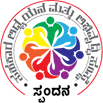
![]() Denmark is a Scandinavian country and is a part of the European continent. It measures 43,094 Sq.km.in area. It has adopted a welfare model of growth and ranks high on the ‘Happiness Index.’
Denmark is a Scandinavian country and is a part of the European continent. It measures 43,094 Sq.km.in area. It has adopted a welfare model of growth and ranks high on the ‘Happiness Index.’
Although it is a small country, it is well-known for its agriculture and animal husbandry, especially dairy farming. How important and central these activities are to Denmark can be gauged from the fact that 61% of the country’s arable land is used for farming activities, and 75% of the food thus produced, including dairy products, is exported to other countries. The dairy products exported include Whole milk, Flavored milk chocolate, skimmed milk, semi-skimmed, cheese, whole yogurt, Lacto free milk, cooking cream, flavored yogurt, butter, protein pudding, flavored milk, fruit-flavored protein pack, and so on…
![]()
Climate and soil conditions in Denmark are congenial for dairy and cattle farming. With an average of 210 dairy cows per dairy, the Danish dairy industry tops the European Union. The Danish dairy products get exported to 150 countries, helping the Danish economy earn an export income of Euro 19.9 billion. These products are of very high quality and meet the highest safety standards. Danish cows are highly productive, yielding a total of 5.6 billion liters of milk annually. Danish Red, Danish Holsteins, Friesian, Ayrshire, Jersey, Guernsey, and Alderney – are a few of the dairy breeds in Denmark. Traditional cow Danish red or Red Dane is a leading dairy cattle breed not only in Denmark but in the entire of Northern Europe.
There are 42,599 pedigree cows in Denmark. An animal is considered to have a good pedigree when its ancestors are known and recorded. By yielding milk with higher butterfat and protein content, ‘Red Danes’ are known as good milk cows.
More than a third, that is, more than 33% of milk consumed by the people of Denmark is organic.
Organic milk is obtained when cows are given feed that is grown without the use of fertilizers and pesticides. The majority of dairy farmers in Denmark have embraced organic food to feed their cattle. Dairy cows are kept indoors and fed fodder during the winter and grazed on natural pastures when weather permits. Normally Danish dairy cows are ‘free-range’ which means they have acres of green pastures to roam. Animal manure produced by the cattle goes back to the fields. Cows are milked twice a day, and most farms use machines for milking. Cow farmers who perform daily activities on a large scale employ 1 to 3 staff members who help them look after the animals. They will be monitoring the daily activities of the dairy business.
![]()
In Denmark, dairy farmers like to keep up to date with up-to-the-minute technologies. It will help them to run the farm more efficiently they believe. Biogas systems, elecelectric mini-wheelers, milk machines, automated feeding rails, refrigeration methods, mixer wagons, transport trucks, ear tags, and pedometers are quite common in danish dairy farms.
Among these, ear tag is interesting one. A metal object called ear tag is used for the identification of dairy cows in Denmark. If this ear tag uses Radio Frequency Identification Device technology (FRID in short) it is referred to as an electronic ear tag, which passes the international standards of ISO11784/5 FDX-B.
By identifying their farm cows individually with RFID animal ear tags, danish cow farmers easily determine and track the cow’s history, birth date, genetics, and performance. these electric ear Tags are designed to last for a life of a dairy cow. As a fast-growing industry, to simplify their regular tasks, dairy farms here, functions under various departments like Herd management system, Feed management system, Milk production system Disease management.
![]()
FARMER-OWNED – ARLA FOOD
The Danish dairy industry involves the international brand FARMER OWNED – ARLA FOODS and 30 other dairy companies with a total of 61 production plants. The sensation story of Farmer owned started over 132 years ago, in the 1880s when independent dairy farmers wished to produce quality products by gathering together, with the idea of Cooperation in Scandinavia, a subregion in Northern Europe. With this cooperative, dairy farmers across Denmark and Sweden made efficient use of the milk they produced.
This Cooperative movement primarily achieved two things :
- First, exceptional quality natural dairy products to the customers.
- Second, better income for dairy farmers.
Structure and Management of Farmer owned:
To this day, Farmer-owned – Arla food is owned by 12500 farmers from 7 countries. Denmark, Sweden, Germany, Luxembourg, The U.K., Belgium, and The Netherlands are the mutual owners of Arla. As a cooperative, all cooperative owners have equal opportunity in decision-making.
Local cooperative owners/ district council members of the Arla cooperative assemble every year in their respective countries to ensure the democratic influence of the cooperative owners in the owner countries. They elect members to represent their district on the Board of Representatives.
The Board of Representatives is the prdecision-makingking body with 187 members. Out of these 175 are owners and 12 are employee representatives. The responsibility of BoR is to make decisions, mainly appropriation of the profit for the year and to elect the members to the Board of Directors.
With the 15 elected farmers and 3 employee representatives, the Board of Directors is responsible for strategic planning, monitoring the company’s activities, Asset Management, Maintaining the accounts, and Appointing the Executive Board. BOD has to ensure that Arla is managed in the best interest of the farmer-owners.
Farmer-owned Arla group has 4 Area councils that are back up-panel of the BOD. It consists of the members of the BOD and BOR. The responsibility of this council is to take care of matters that are of special interest to the farmer-owners of each geographic area.
All of Arla’s income goes back to its farmer-owners. This means, when the customer buys Arla products, the money is shared equally on each liter of milk that the owner supply – This is a core value in any Cooperative model.
Arla group farmers share the profits and losses from all markets and stand together in favorable and adverse time.
Source : Internet.

Vanishree B.
Institute for Study and Development of Cooperation,
‘Spandana’, Mangalore


